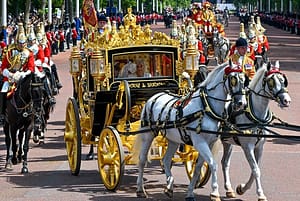Beer guru Pete Brown on why Parcel Yard at King’s Cross station isn’t your regular dingy station pub
Usually, there’s never a dull moment in the world of beer. There’s so much happening that normally I’m struggling to choose what to write about in this column in any given week.
But last week I was ill, out of sorts, energy levels at zero, my finely honed palate wiped out by unseasonal snot. Gingerly leaving the house for a couple of meetings today, I realise my deadline is due and I have nothing to write about. I decide to go to a pub and think about it. I take my lime and soda (I’m still ill, remember) to an empty table and rack my brains for inspiration.
And then I realise that it’s all around me.
The pub I’m sitting in as I write this is the Parcel Yard in King’s Cross station. It opened in March 2012, and it’s a marvel – a pub that gives you hope for the future of pubs.
Station pubs are normally dingy, depressing affairs – the pubs that preceded the Parcel Yard in the old version of King’s Cross station certainly were. With a high volume, transient customer base and few locals, they have guaranteed footfall without having to make an effort over troublesome things such as clean toilets, decent beer or pleasant service. By contrast, the Parcel Yard has one of the best ranges of beer I’ve seen in a mainstream pub, stunning architecture, better food than many nearby restaurants, and a light, friendly atmosphere.
True, it takes the piss with the price it charges for a lime and soda. But there’s no such thing as a perfect pub, and as imperfections go, I can live with a ludicrously priced soft drink.
The Parcel Yard is a Fuller’s pub. In its new ad campaign, Fuller’s – London’s last surviving ‘traditional’ brewery before Meantime heralded the dawn of the micros in 1999 – claims to be ‘Made of London’. The Chiswick brewer is seeking to cash in on London’s renewed sense of identity and – well – pride, which is fair enough when your biggest beer is called London Pride. The campaign tells us the beer was originally named after a bright, hardy flower that grew in the rubble left by the Blitz. Every now and then, one will give you a shiver, or at least makes you glad to have read it and learned something. Rather wonderfully, many pubs have each been sent a planter of the flowers. Sometimes advertisements patronise you or insult you.
In today’s dynamic beer scene, we have the luxury of regarding Fuller’s London Pride as a ‘boring brown beer’. When people say this, it’s a useful way of distinguishing between people who know anything about beer and hop-addicted sheep blindly proclaiming that anything with an unbalance of American hops is ‘awesome’.
I don’t drink Pride very often myself these days, because it’s usually on the bar next to something I’m more interested in trying. But I’d never call it boring. It’s rich and malty and satisfying, and not everyone who serves it keeps it in great nick, but when they do, it had delicious orange marmalade notes.
I’ve long admired the way Fuller’s combines the mainstream sessionability of beers like Pride with an openness to something more unusual. Many of their more challenging beers are steeped in a tradition the new micros could never match, and yet the openness to new ideas in Chiswick would feel familiar to any hip young hopslinger.
I was invited recently to be a guest judge in Fuller’s annual master cellarman competition. A great deal of the romance in cask ale comes from that fact that the brewing process is finished not in the brewery itself, but in the pub cellar. Cask ale is a living, breathing thing – tapping the cask in the cellar starts the slow secondary fermentation process that adds an extra layer of subtlety and gels the flavours of the beer together. Cleanliness and attention to detail are important. And while it’s perfectly possible to serve a decent pint of cask ale simply by making sure you follow the instructions, the very best beer comes from those who regard keeping it and nurturing it, bringing out its best, as a vocation rather than a chore. I was privileged to visit the cellars of eight finalists who regard this unseen and sometimes forgotten area of the pub as their pride and joy. I’ve never been as interested in taps and spiles and venting and line cleaning as I am in why people drink and what happens when they do, but it’s humbling to see people who work so relentlessly to the point where their cellars are shrines to beer excellence.
The Parcel Yard makes me happy that I live in London. It’s half an hour on the 73 bus from my house, and not much more than that from large parts of southern England. It serves the full range of Fuller’s beers, and as I sit here, slowly succumbing to the idea of ordering one (they’re not that much more expensive than the lime and soda after all) I wonder if I can get away with suggesting that Fuller’s is the perfect brewery for London, a direct product of this particular city.
I think I can.
Dammit, yeah, because making such sweeping claims is part of the whole London thing anyway. Naming your flagship beer after a beacon of hope during the Blitz shows the same chutzpah that drives someone to spend what is clearly an astonishing amount of money redefining the station pub in what was once one of London’s seediest areas. The balance of reverence for tradition and openness to new ideas, the self-belief, and, yes, the occasional flash of hucksterism that manifests itself in charging £2.10 for a lime and soda while keeping a straight face…
It takes a hefty set of cojones to go out on the street and say you symbolise everything that makes London great. Cocksure only because it possesses a sense of its own worth that is curiously un-English but very Lan-dahn, guv’nor, Fuller’s pulls it off.
Pete Brown is the author of the newly published Shakespeare’s Local, an amusing romp through six centuries of history through the George Inn near London Bridge, watering hole to Chaucer, Dickens and the Swan of Avon. It is currently Radio 4’s book of the week.
Pete is also celebrating being crowned Beer Writer of the Year for a second time.
You need to read…
Brown’s beer: Why expensive beers are way better than pricey wines
Brown’s beer: Why cider is the world’s most misunderstood drink – part one
Brown’s beer: Why I don’t subscribe to anti-alcohol hysteria this January






Leave a Comment